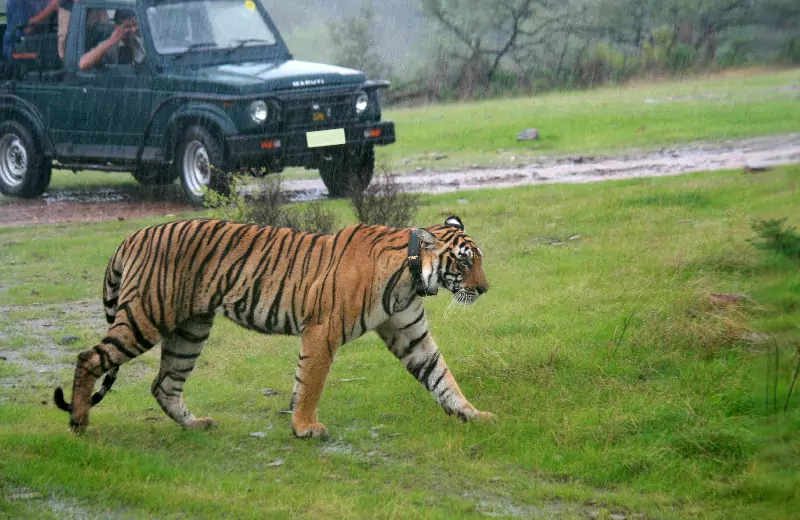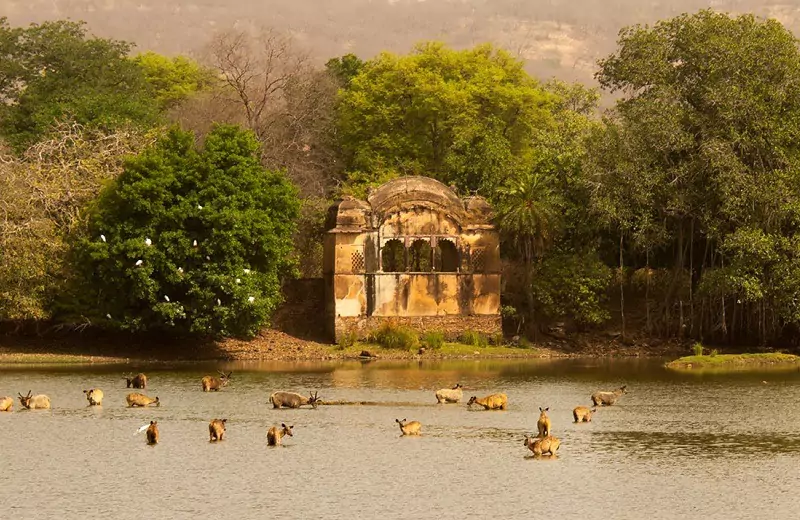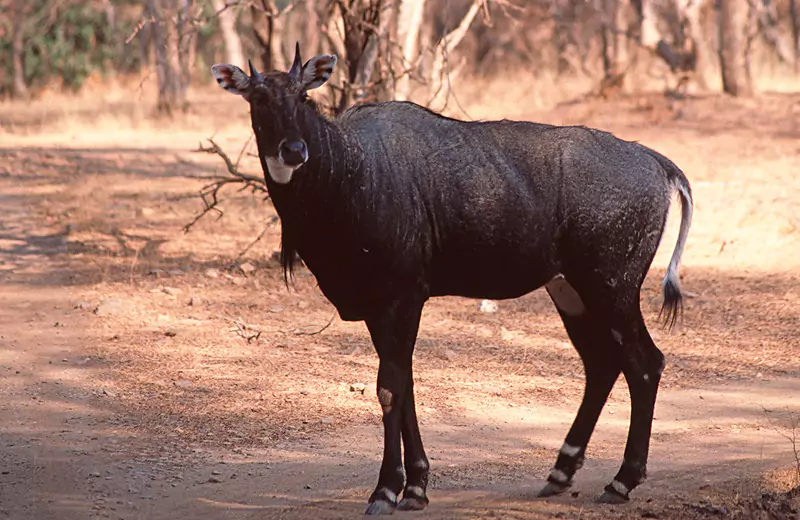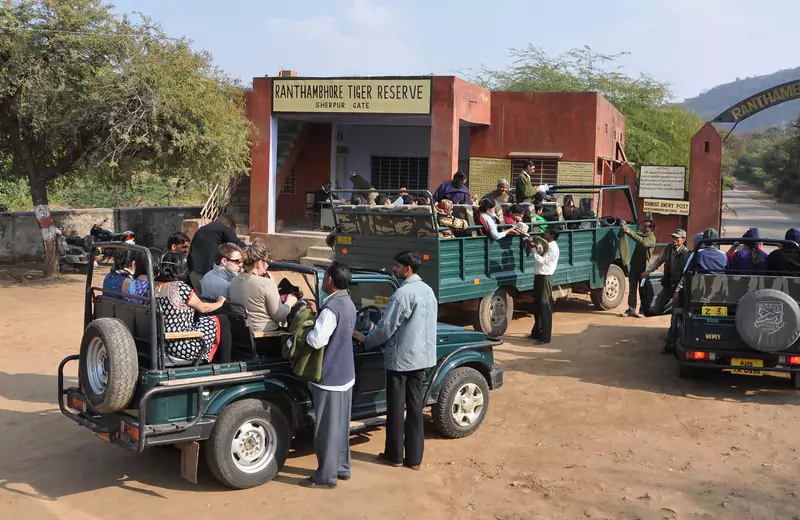How to Travel from Jaipur to Ranthambore
- Home
- How to Travel from Jaipur to Ranthambore






How to Travel from Jaipur to Ranthambore: A Complete Guide
Ranthambore National Park, one of India’s most famous wildlife sanctuaries, is a must-visit destination for those seeking to explore India’s rich flora and fauna. Located in the Sawai Madhopur district of Rajasthan, it is home to the majestic Royal Bengal tigers and other wildlife. If you’re visiting Jaipur, the capital of Rajasthan, a trip to Ranthambore is an excellent way to experience the wilderness of India. The distance from Jaipur to Ranthambore is around 180 kilometers, and with various transportation options available, it’s easy to make your way to this remarkable destination.
In this guide, we will walk you through the different ways you can travel from Jaipur to Ranthambore, the best times to visit, tips for a smooth journey, and what to expect upon arrival. Whether you’re traveling for a safari experience or to enjoy nature, this guide will make your journey from Jaipur to Ranthambore hassle-free.
Why Visit Ranthambore?
Before diving into the travel details, let’s take a quick look at why Ranthambore should be on your itinerary. Ranthambore National Park is one of the largest and most famous national parks in India. Known for its excellent tiger sightings, the park is also home to leopards, bears, deer, and a variety of bird species. The park offers multiple safari zones, making it a great spot for nature lovers and wildlife photographers.
Apart from the wildlife, Ranthambore also has historical significance. Within the park lies the ancient Ranthambore Fort, which dates back to the 10th century. The fort adds a unique cultural touch to the wilderness experience.
How to Reach Ranthambore from Jaipur
There are several ways to travel from Jaipur to Ranthambore, each with its pros and cons. Let’s explore the options.
1. By Car (Private or Rental)
The most convenient and flexible way to travel from Jaipur to Ranthambore is by car. The journey takes approximately 3-4 hours, depending on traffic conditions. The road is well-maintained, and you can enjoy the scenic views of Rajasthan’s countryside during the drive.
Private Car: If you prefer a comfortable and hassle-free journey, booking a private car is a great option. A private car gives you the flexibility to stop along the way, stretch your legs, and enjoy a more relaxed ride. It’s also ideal for families or groups of friends who want to travel together.
Rental Car: If you prefer to drive yourself, renting a car is also an option. Rental services are available in Jaipur, and many car rental companies offer both self-drive and chauffeur-driven options.
Route: The most commonly used route from Jaipur to Ranthambore is via the NH 11 highway, passing through towns like Dausa and Lalsot before reaching Sawai Madhopur, where the park is located. The road is scenic, and you’ll pass by small villages, fields, and the occasional wildlife.
Tips:
- Ensure your car is in good condition and has air conditioning for comfort.
- Carry a map or use GPS to navigate the route.
- Plan for rest stops, especially if you’re traveling in summer, as the heat can be intense.
2. By Train
Traveling by train is another popular and affordable option to reach Ranthambore from Jaipur. Sawai Madhopur is the nearest railway station to Ranthambore National Park, and it is well connected to Jaipur. The journey by train is comfortable and scenic, and you can enjoy the countryside views while traveling.
Train Options: Several trains run between Jaipur and Sawai Madhopur, including express trains and passenger trains. The train journey usually takes around 3-4 hours.
Popular Trains:
- The Ranthambore Express: One of the most convenient options, this train runs daily between Jaipur and Sawai Madhopur.
- The Ajmer-Howrah Express: Another option, which connects Jaipur to Sawai Madhopur via Ajmer.
Booking Tickets: You can book your train tickets in advance through the Indian Railways website, the IRCTC app, or through any travel agency. It’s always a good idea to book your tickets early, especially during the peak tourist season.
Tips:
- Arrive at the station at least 30 minutes before your train’s departure time.
- Make sure to check the train schedules and availability, as timings can sometimes change.
- Carry some snacks and water, as trains may not always offer food and beverages.
3. By Bus
Traveling by bus from Jaipur to Ranthambore is another affordable and straightforward option. Several private bus operators run buses from Jaipur to Sawai Madhopur. The bus journey typically takes 4-5 hours, depending on traffic and road conditions.
Bus Types: You can choose between AC and non-AC buses, depending on your budget and preferences. The buses are generally comfortable, and you’ll find both sleeper and seating arrangements.
Booking Tickets: Tickets can be booked online through bus service websites or through travel agents. It’s always advisable to book in advance, especially during the tourist season.
Tips:
- Check the bus departure timings in advance, as they can vary depending on the service.
- Carry some water, snacks, and a light jacket if you are traveling by AC bus, as the air conditioning can be quite cold.
4. By Private Tour Package
For those who prefer a more organized and stress-free travel experience, a private tour package is an excellent option. Many tour operators in Jaipur offer customized travel packages that include transportation, accommodation, and safari bookings.
A private tour package often includes the following:
- Transportation: A comfortable vehicle (car, bus, or minivan) with a driver who is familiar with the route.
- Accommodation: Depending on the package, accommodation can be provided in luxury hotels, budget lodges, or resorts near Ranthambore.
- Guided Safari: Some packages also include a guided safari tour of the Ranthambore National Park.
A private tour package can be a great option if you’re short on time or prefer to avoid the hassle of planning the trip yourself.
Tips:
- Choose a reputable tour operator with good reviews.
- Compare prices and inclusions before booking.
- Ask for a detailed itinerary to ensure the package suits your preferences.
Best Time to Visit Ranthambore
The best time to visit Ranthambore is during the cooler months, from October to March. During this period, the weather is pleasant, and you’re more likely to spot wildlife as the animals come out to the watering holes. The park remains closed during the monsoon season (from July to September) due to the heavy rainfall.
- Winter (October to March): This is the peak tourist season in Ranthambore, and it is the best time for wildlife sightings. The weather is cool and comfortable, making it ideal for safaris.
- Summer (April to June): While the weather can be very hot, summer is also a great time for tiger sightings as the animals head to the waterholes to drink. If you can handle the heat, visiting in summer might offer better chances of spotting wildlife.
- Monsoon (July to September): The park is closed during the monsoon season to protect both the wildlife and the visitors. However, the surrounding landscape becomes lush and green during this period, making it a great time for nature lovers.
Things to Do in Ranthambore
Once you’ve reached Ranthambore, there are plenty of exciting things to do. Apart from the famous wildlife safaris, here are some must-do activities:
- Tiger Safari: The main attraction of Ranthambore is, of course, the tiger safari. The park offers both morning and evening safaris in open-top jeeps or canters.
- Visit Ranthambore Fort: Situated within the park, this 10th-century fort is a UNESCO World Heritage Site. It offers stunning views of the park and is an important historical landmark.
- Explore the Local Village: Visit nearby villages to experience the rural life of Rajasthan, including its handicrafts and traditional cuisine.
- Photography: Ranthambore is a paradise for wildlife photographers. Capture the majestic tigers and other wildlife in their natural habitat.
- Bird Watching: Ranthambore is home to over 300 species of birds, making it a great destination for birdwatchers.
Tips for a Successful Jaipur to Ranthambore Trip
- Book Safaris in Advance: Ranthambore is a popular destination, so it’s advisable to book your safari tickets in advance to secure your spot, especially during peak season.
- Carry Essentials: Bring sunscreen, hats, and sunglasses to protect yourself from the sun. Also, carry a camera, binoculars, and a water bottle for the safari.
- Respect Wildlife: Always follow the rules of the park and respect the wildlife. Do not disturb the animals or get too close to them.
- Pack Light: Pack light and comfortable clothing for the safari. Choose neutral colors to blend in with the surroundings and avoid bright clothes that may disturb the wildlife.
Conclusion
The journey from Jaipur to Ranthambore is an exciting and enriching experience. Whether you’re traveling by car, train, or bus, the trip offers a chance to explore the wild beauty of Rajasthan. With its rich wildlife, historical sites, and scenic landscapes, Ranthambore is a must-visit destination for nature and adventure enthusiasts. By following this guide, you’ll be well-prepared for your journey and ready to enjoy the wonders of this incredible national park.

